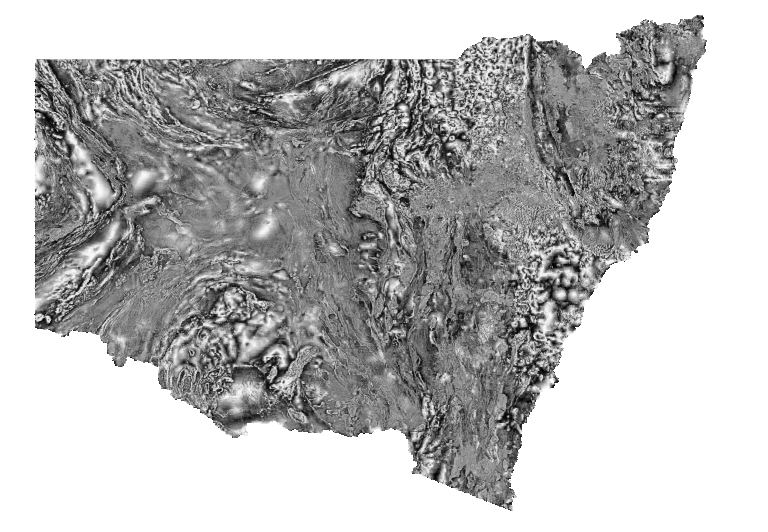Tilt filter
Type of resources
Topics
Keywords
Contact for the resource
Provided by
Years
Formats
status
-

Greyscale image of the tilt-angle filter (Tilt) of total magnetic intensity, reduced to the pole (TMI RTP). Darker tones indicate lower values and lighter tones represent higher values. Reduction to the pole filters magnetic anomalies to appear as if the Earth's magnetic field were locally vertical, as at the magnetic pole (assuming all magnetic sources are inductively magnetised). The Tilt filter produces a positive maximum over the centre of a magnetic source and is zero near the edge of the source, and is useful for tracing geological structure below variable depths of cover. Variations in the magnetic field are caused by lithological factors, principally magnetite (and/or pyrrhotite) content. This Statewide image was generated by merging many individual airborne magnetic surveys.
-
Isostatic residual Bouguer gravity image overlain on tilt-filtered total magnetic intensity reduced to the pole (Tilt TMI RTP) image. The image is a partially-transparent pseudocolour layer of Isostatic residual Bouguer gravity, with a histogram-equalised colour-stretch, overlain on a greyscale intensity layer of the Tilt TMI RTP, with a histogram-equalised stretch. Bouguer gravity compensates for variations in latitude, 'free-air' elevation and Bouguer correction (assuming a crustal density of 2.67 T/m³). The isostatic correction removes the effect of variations in the thickness of the Earth’s crust due to changes in topography. The tilt-angle filter of total magnetic intensity produces a local positive maximum over a magnetic source and is zero near the edge of the source, and is useful for tracing geological structure below variable depths of cover.
 NSW Geoscience Metadata
NSW Geoscience Metadata